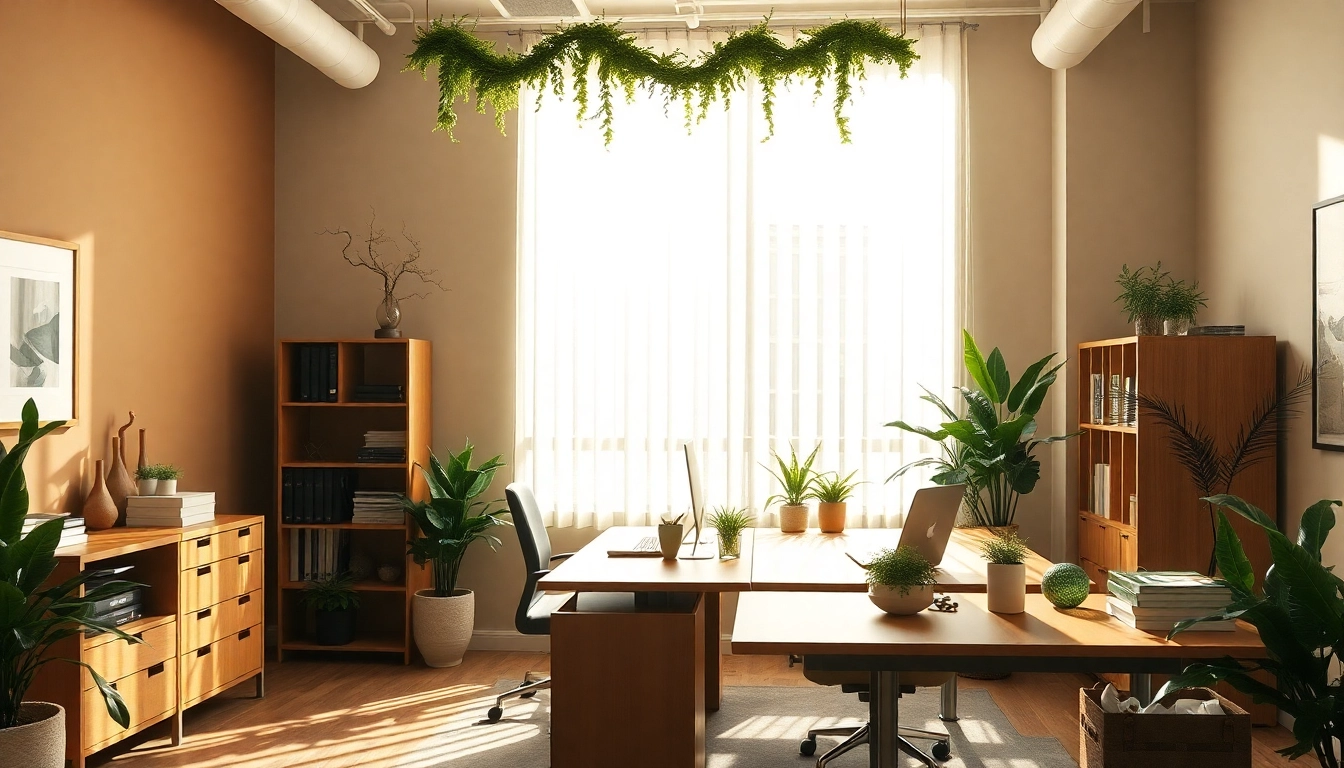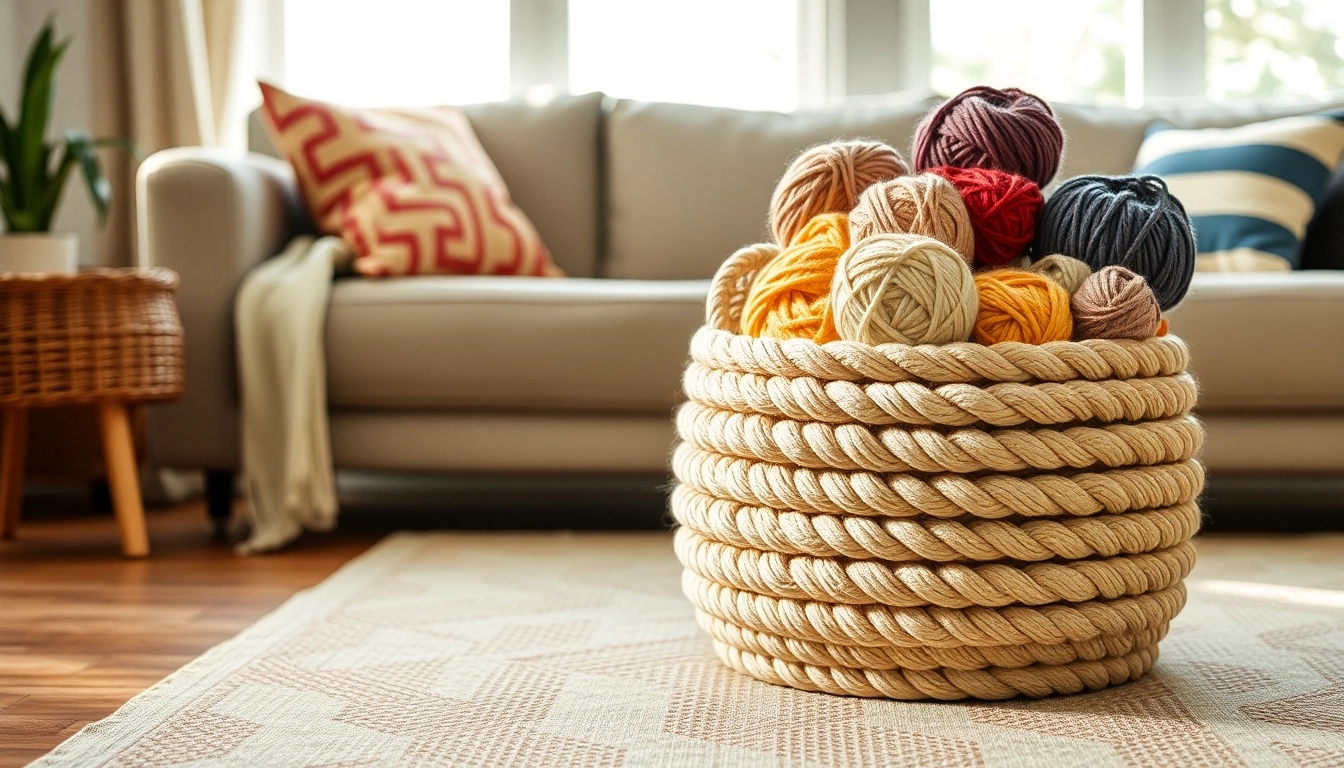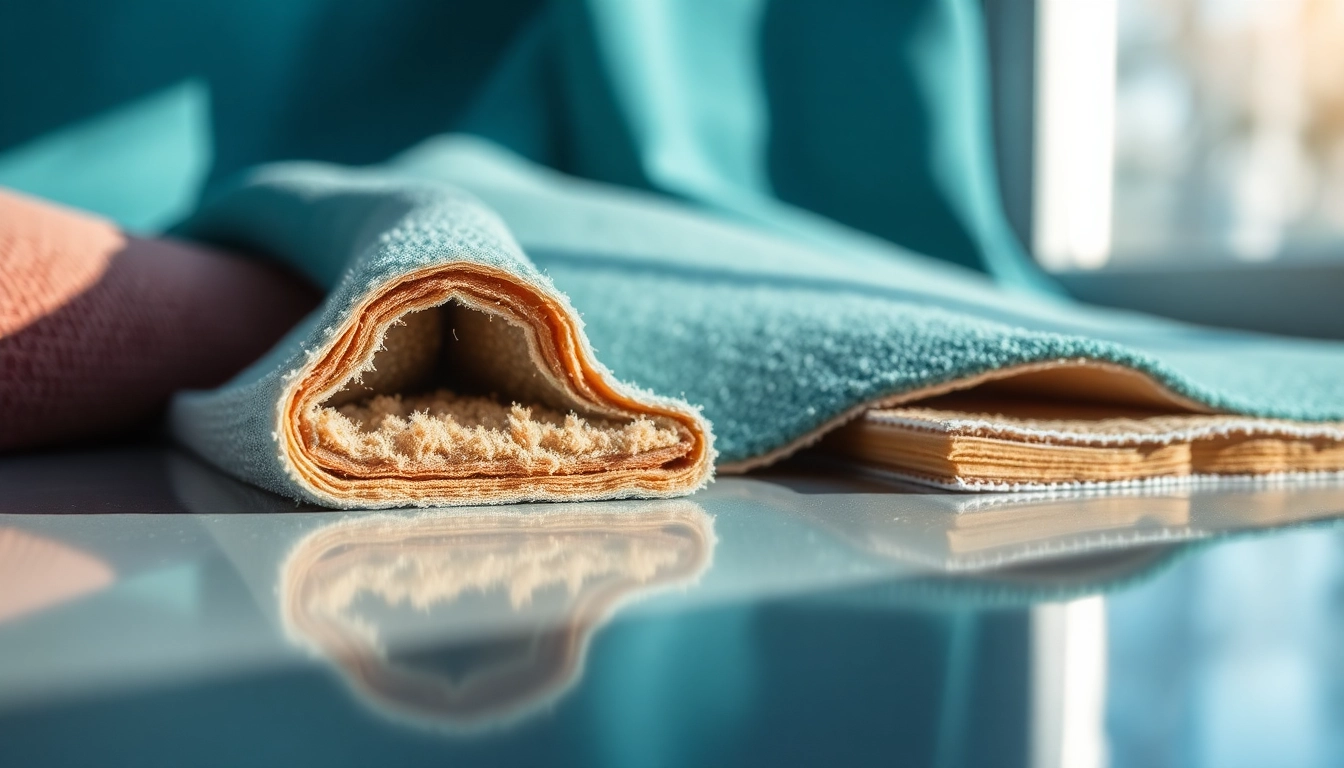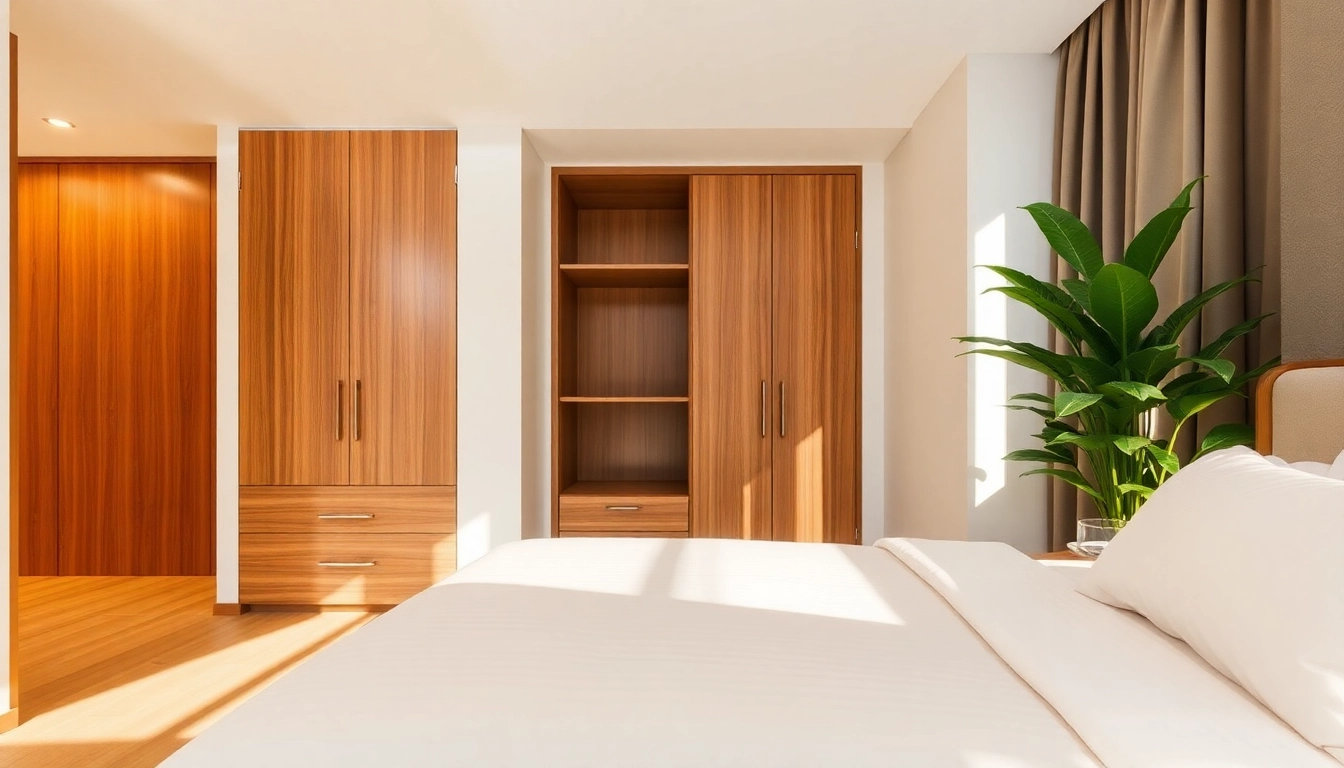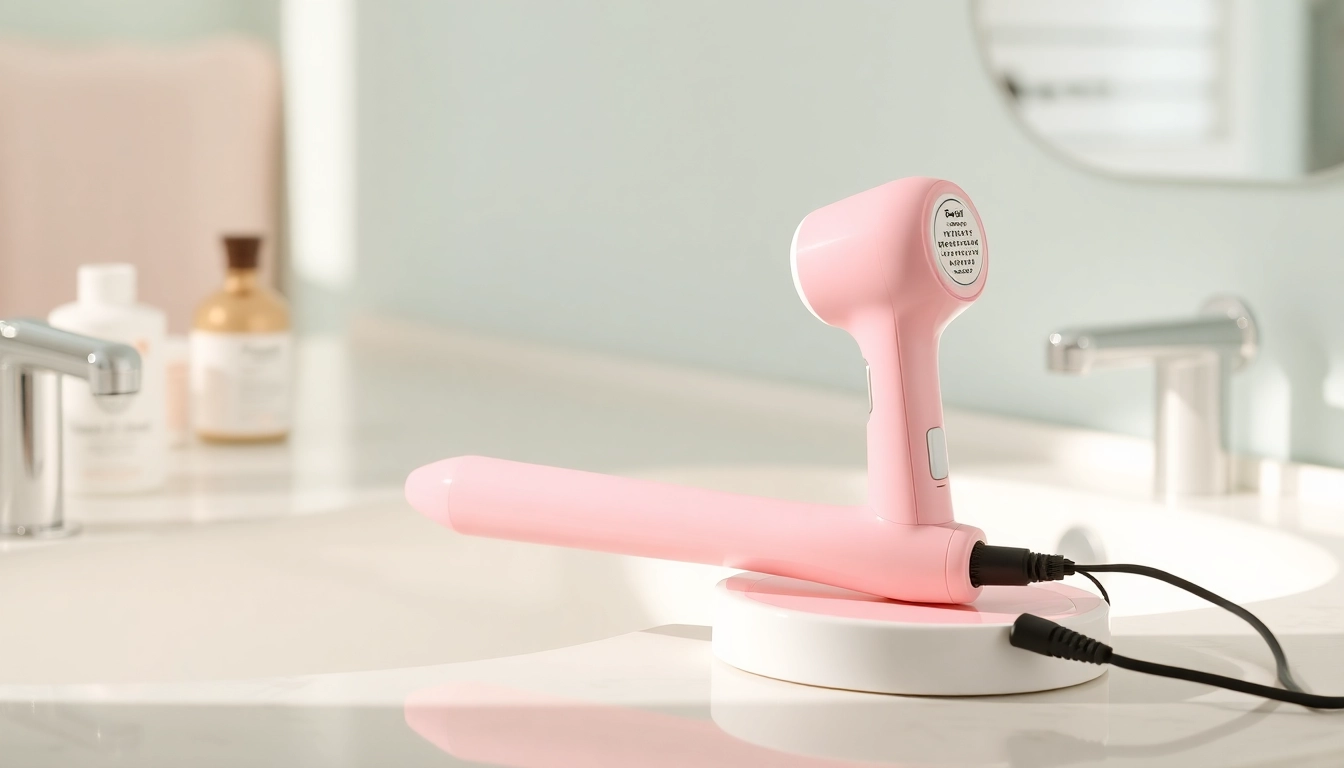Understanding the Mooswand Büro Concept
What is a Mooswand Büro?
The concept of a Mooswand Büro refers to a workspace integration of a moss wall. This innovative design incorporates various types of preserved moss, creating a natural, aesthetically pleasing barrier that not only enhances the visual appeal of an office but also serves numerous functional benefits. The moss wall acts as a living element in otherwise sterile environments, bringing the outside in and effectively contributing to an enriched work atmosphere. With various types of moss available, the creative possibilities for how these installations can be designed are nearly endless, making the Mooswand Büro an increasingly popular choice for modern workplaces.
Benefits of Incorporating a Mooswand
Implementing a Mooswand Büro goes beyond mere aesthetics; it offers a plethora of benefits that can significantly enhance the workspace. These advantages can be broken down into psychological, aesthetic, and physical benefits.
- Improved Air Quality: Moss naturally filters toxins and improves indoor air quality by absorbing pollutants and releasing oxygen. This can create a healthier work environment.
- Sound Absorption: Moss walls are excellent sound absorbers. They can dampen noise, which is especially beneficial in open office layouts, helping to create a more focused working environment.
- Stress Reduction: The visual and tactile qualities of moss have been shown to reduce stress levels and improve overall mood. Access to natural elements in a workspace can lead to increased levels of happiness among employees.
- Enhanced Aesthetic Appeal: A Mooswand Büro creates a stunning focal point that can elevate the overall design of an office space, making it more inviting and engaging.
Ideal Spaces for Mooswand Büro Implementation
The potential applications for a Mooswand Büro are vast and varied. However, some environments particularly benefit from its presence:
- Entryways and Reception Areas: A moss wall in these spaces can create a welcoming first impression for visitors.
- Meeting Rooms: The calming effects of greenery can foster creativity and collaboration during brainstorming and discussions.
- Break Rooms: Integrating a moss wall can provide employees with a refreshing space to relax and recharge.
- Open Workspaces: Moss panels can create a visual separation between workstations while enhancing noise control.
Choosing the Right Materials for Your Mooswand Büro
Types of Moss and Their Aesthetic Appeal
When considering the aesthetic foundation of your Mooswand Büro, the type of moss used plays a crucial role. Each type of moss offers unique textures, colors, and characteristics, contributing to the overall design:
- Reindeer Moss: Known for its fluffy, lichen-like appearance, reindeer moss comes in various colors such as green, gray, and white. It creates a soft, inviting texture that enhances the organic feel of the space.
- Pillow Moss: This type is thicker and has a plush feel, making it perfect for creating a more robust wall display. Its vibrant green color adds liveliness and a sense of freshness to the environment.
- Sheet Moss: With a flatter look, sheet moss is ideal for a more groomed and structured appearance. It’s often used to create patterns and designs within the wall.
Maintenance Tips for Long-lasting Mooswand
Although a Mooswand may seem like a low-maintenance solution, proper care is essential for longevity. Here are some maintenance tips to consider:
- Avoid Direct Sunlight: Moss walls thrive under indirect sunlight. Direct exposure can lead to fading and deterioration.
- Humidity Levels: Maintain humidity levels between 40-60% for optimal conditions; too dry or too humid can harm the moss. Using a hygrometer can help monitor levels.
- Regular Cleaning: Dust can accumulate on the moss. Lightly vacuuming or gently brushing can help preserve its visual appeal.
- Periodic Inspections: Routine checks for signs of deterioration or discoloration will help catch potential issues early.
Eco-Friendly Options for Sustainable Design
As the push for sustainability continues to grow, using eco-friendly materials and practices in your Mooswand Büro design becomes essential. Some options include:
- Harvested Sustainably: Ensure the moss is sourced from environmental-friendly suppliers who practice sustainable harvesting.
- Local Sourcing: Whenever possible, select materials from local suppliers to minimize transportation emissions.
- Natural Adhesives: Use non-toxic and biodegradable adhesives for moss application to promote safety and sustainability.
Mooswand Büro Design Inspirations
Innovative Layouts and Arrangements
Designing your Mooswand Büro can be an exciting journey filled with creative possibilities. Here are some innovative layouts to consider:
- Vertical Gardens: Utilize the height of walls by creating a full vertical garden effect with various types of moss intermixed with plants.
- Geometric Patterns: Employ different moss types to create geometric designs that contrast textures and colors, lending a modern twist to natural elements.
- Artistic Shapes: Design custom shapes, like company logos or symbols, using moss to create a branding asset that doubles as an art installation.
Color Schemes that Complement Greenery
Selecting appropriate color schemes to complement your Mooswand is crucial to creating a cohesive design. Here are suggestions:
- Neutrals: Shades of gray, beige, and white can provide a soft backdrop for moss, allowing it to stand out as the focal point.
- Earthy Tones: Colors like terracotta, muted greens, and browns can enhance the organic feel, seamlessly blending interior and nature.
- Pops of Color: Consider accents in vibrant colors—like teal or mustard yellow—that heighten the visual interest without overwhelming the natural aesthetics.
Mood Enhancement through Natural Elements
Cultivating a work environment that promotes emotional well-being is essential. Adding moss elements can transform the ambiance in several ways:
- Biophilic Design: By incorporating moss into your office, you’re embracing biophilic design principles, thereby connecting employees to nature and potentially improving creative thinking.
- Color Psychology: The green hues of moss have soothing effects that can help reduce anxiety, increase focus, and improve mood.
- Personal Touches: Including personalized designs or interactive elements within the moss walls can foster a sense of community and belonging among employees.
Common Challenges in Creating a Mooswand Büro
Dealing with Light and Humidity
While a Mooswand Büro offers numerous advantages, it also presents certain challenges that should be addressed effectively:
Light sensitivity is a primary concern; although moss is resilient, it thrives best in indirect light conditions. If your workspace has inadequate natural light, consider artificial grow lights specially designed to support plant vitality. Managing humidity is equally crucial, as moss requires a delicate balance—too much moisture can encourage mold, while too little can dry it out. Regular monitoring with hygrometers, along with proper ventilation systems, can mitigate these issues.
Cost Considerations for Setting Up
Budgeting for a Mooswand Büro can vary widely based on size, materials, and installation. It is essential to consider not just the initial costs but also long-term maintenance expenses. Performing a thorough cost-benefit analysis will give a clearer picture of expected ROI. Utilize cost-effective solutions where possible, such as DIY installations, though consulting with professionals may ultimately ensure a high-quality finish that reflects well on your brand.
Choosing the Right Style for Your Brand
Your Mooswand Büro should reflect your company culture and brand identity. Whether you opt for a casual, relaxed design or a sleek, corporate look, alignment with your corporate ethos is key. Conducting employee surveys or holding brainstorming sessions can help ensure that the selected style resonates well with your team—thereby fostering a sense of ownership and pride in the workspace.
Measuring the Impact of Your Mooswand Büro
Employee Satisfaction and Productivity Metrics
To fully appreciate the value of your Mooswand Büro, it’s important to measure its impact on employee satisfaction and productivity. Surveys can be an effective tool to gauge perceptions of the workspace both before and after implementation. Key metrics can include employee feedback, productivity tracking, and changes in absenteeism. A well-executed implementation should reflect improved employee morale and performance metrics post-integration.
Visual Aesthetics vs. Functionality
Striking a balance between visual appeal and functionality is essential. While aesthetic enhancements contribute significantly to morale, the workspace should remain functional and efficient. Measuring metrics like noise levels, light quality, and employee comfort can help you determine the effective balance between these two critical aspects.
Long-term Return on Investment Analysis
Conducting a long-term ROI analysis of your Mooswand Büro entails examining numerous elements: emotional well-being, retention rates, and even environmental sustainability metrics can all be tied back to the innovations within the workspace. Regularly reviewing these criteria can provide valuable insights into the overall financial and social impacts of your moss wall initiative, justifying or re-evaluating expenditures based on performance outcomes.
